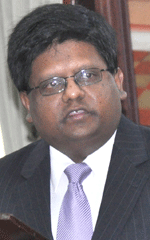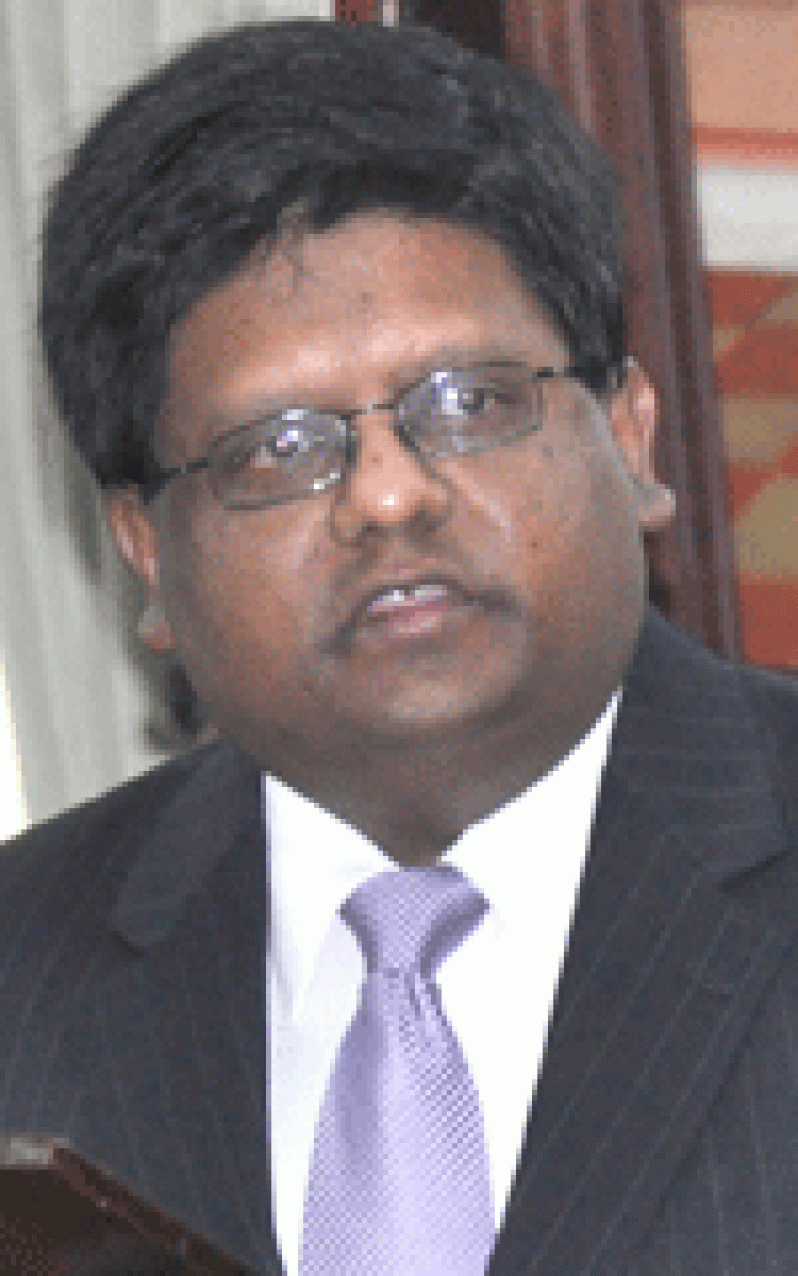Finance Minister rates Guyana’s economic performance ‘outstanding’
GUYANA can boast of steady economic growth in spite of the fluctuating fortunes of a world market in which many economies are still bedeviled by the spectre of complete decimation.  This is according to Finance Minister, Dr. Ashni Singh, who made the welcome announcement Friday during his presentation of the much-anticipated 2012 Budget to the National Assembly, where he not only noted that the country’s productive base is showing increasing signs of resilience and dynamism, but that it is even more diversified than ever before.
This is according to Finance Minister, Dr. Ashni Singh, who made the welcome announcement Friday during his presentation of the much-anticipated 2012 Budget to the National Assembly, where he not only noted that the country’s productive base is showing increasing signs of resilience and dynamism, but that it is even more diversified than ever before.
Noting that this year’s budgetary allocation, tagged at a whopping $192.8B, was being presented at a time when the Guyanese economy is at its strongest in recent memory, with real growth in gross domestic product (GDP) averaging 4.4 percent over the past five years, Dr Singh said:
“Mr. Speaker, much policy effort has been devoted by this government to make the Guyanese economy more robust and resilient, better able to withstand external shocks, and less vulnerable to the vicissitudes of domestic single industry upheavals.”
Referring to the implemented strategies that ensured this, Dr Singh said:
“We have done this by aggressively promoting the development of a more diversified productive base and by advancing an agenda for improving national competitiveness. These efforts have yielded the result that the domestic economy has endured the worst global and regional economic crisis in living memory without significant disruption or dislocation.”
He said that owing to the performance of the domestic economy, government was able to reaffirm its commitment to improving the livelihood of public servants, inclusive of teachers and members of the disciplined services with the granting of an eight (8) per cent across-the- board increase in wages and salaries.
“Central government revenue in 2011 amounted to $120.9B, 12.1 per cent over 2010, attributed to enhanced collections among both tax and non-tax categories…non-interest current expenditure increased by 17.9 percent to $92.5B,” Dr Singh said, adding that all this was achieved through prudent management of public debt which is an integral aspect of maintaining macroeconomic stability into the medium-term.
To better drive home the point, he said: “Progress has been made in debt negotiations with our bilateral creditors, in particular the Russian Federation and Venezuela… The governments of Guyana and Venezuela have agreed on the procedure for the cancellation of significant portion of Guyana’s oil debt in compensation for rice and paddy exports.”
The Caribbean vs. Global Crisis
On the implications of the ongoing global economic crisis, Dr Singh said that one stark lesson has been that no matter how small an economy might be, or how distant it might appear from the major financial metropolises of the world, the potential domestic consequences of global economic and financial events are always near, given the extent of today’s interconnectedness.
A case in point, he said, was Guyana and sister CARICOM member states. “…the Caribbean contributed in no significant way to the onset of the crisis, yet so many of our economies faced, and continue to face, the threat of complete decimation in the wake of the crisis.”
In the circumstances, he cited an urgent need for the Region to have a lasting strategy for entrenching robust economic growth, and for restoring fiscal sustainability for the long term, a goal which he noted remains unmet.
Responsible policies
But, the global economic situation notwithstanding, Dr Singh said Guyana has emerged as a stronger economy, amidst the reality that today’s external environment is characterised by a virtually limitless interconnectedness that exacerbates exposure and vulnerabilities as much as it creates opportunities.
“This resulting uncertainty has manifested itself in considerable economic trauma for many small economies, including some in our Region. It is therefore to our collective credit as a country that we have traversed these perilous times and emerged thus far an even stronger economy,” he said, adding:
“The growth that we have achieved in recent years bears testimony to the soundness and responsibility of our policies; it also bears testimony to the response by our private sector, which has been positive and sustained.”
The upshot of all this prudence, he said, is that the country is literally at the most exciting juncture in its economic history, and poised for rapid takeoff. And once large-scale investment in such sectors as information technology, mineral extraction, and agriculture materialise, he said, the implications for growth and job creation, and income and wealth generation will be vast, and the beneficiaries will be the Guyanese people.
Development path
It is against this backdrop that he pointed to the collective responsibility of ensuring that these opportunities are mobilised as quickly as possible, in spite of the new Parliamentary configuration, and urged that the necessary actions are taken to keep Guyana on the path to accelerated economic growth and social development, where actions are avoided that could possibly jeopardise this being realised.
“No less is required of us, as responsible representatives of the Guyanese people,” the Finance Minister said. “We have before us an incomparable chance to put this configuration to the test. Budget 2012 is built around objectives with which very few could rationally disagree. The achievement of higher levels of sustainable real growth in the economy, preserving the conditions necessary for private investment and job creation, expanding and upgrading our country’s infrastructure, raising access to and improving quality in our social services and making steady advances on all of our key social indicators, further strengthening of our public institutions, goals that would readily be embraced by all.”
Projections
In terms of how he sees the country performing in the coming year, Dr Singh said the economy is expected to grow by some 4.1%, continuing on the path of positive growth which it enjoyed for the past five years, which, on average, was 4.4%.
In terms of performance by sector, he said all the major agriculture sub-sectors and service sector are projected to show an increase, with the sugar industry pegged at 5.7%; rice-2.6%; livestock-4.9%; manufacturing 3.9%; wholesale and retail service -6.3 and 6.5 respectively; transportation -9%; and mining – 1.8%. However, forestry and fishing are expected to decrease slightly, while inflation is projected to be 4.6%.
This year’s budgetary allocation is a record-breaking $192.8 billion, as opposed to last year’s, which was tagged at $161.4 billion.




.jpg)










